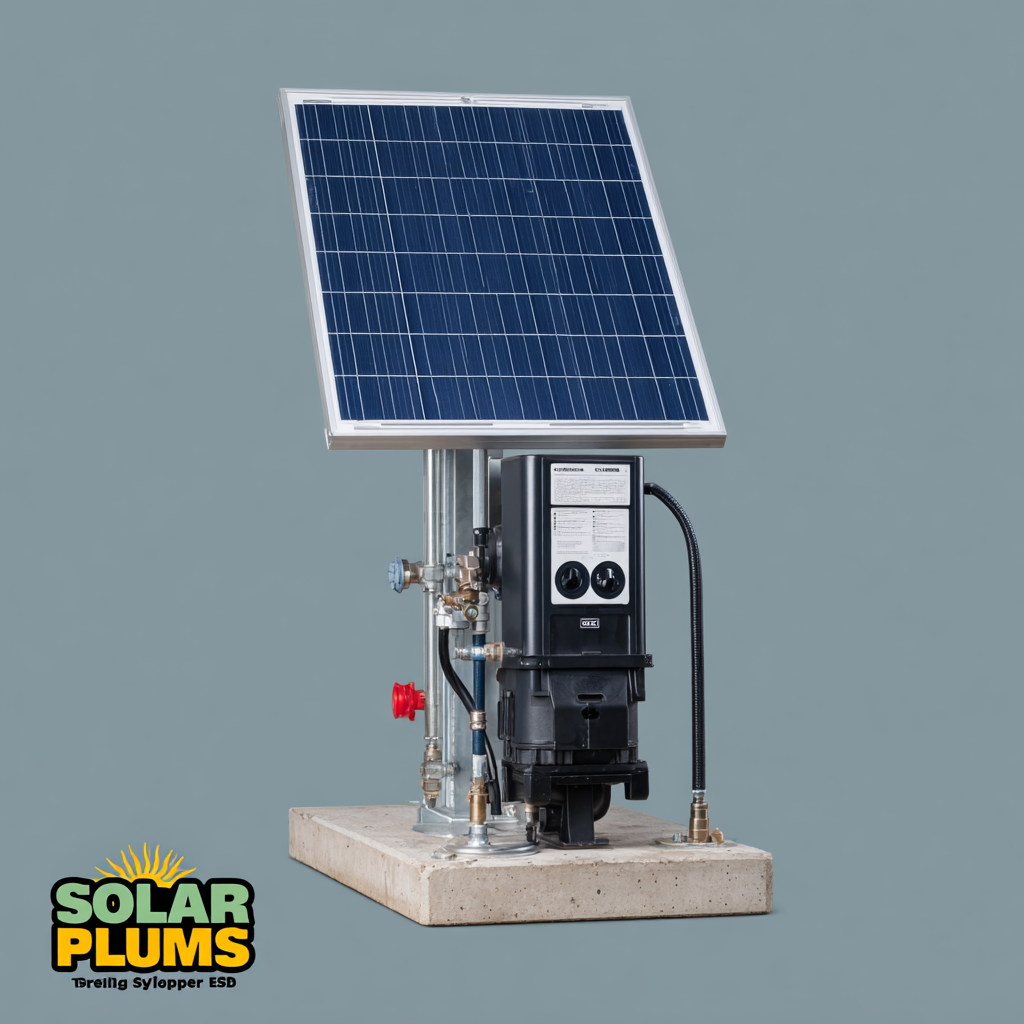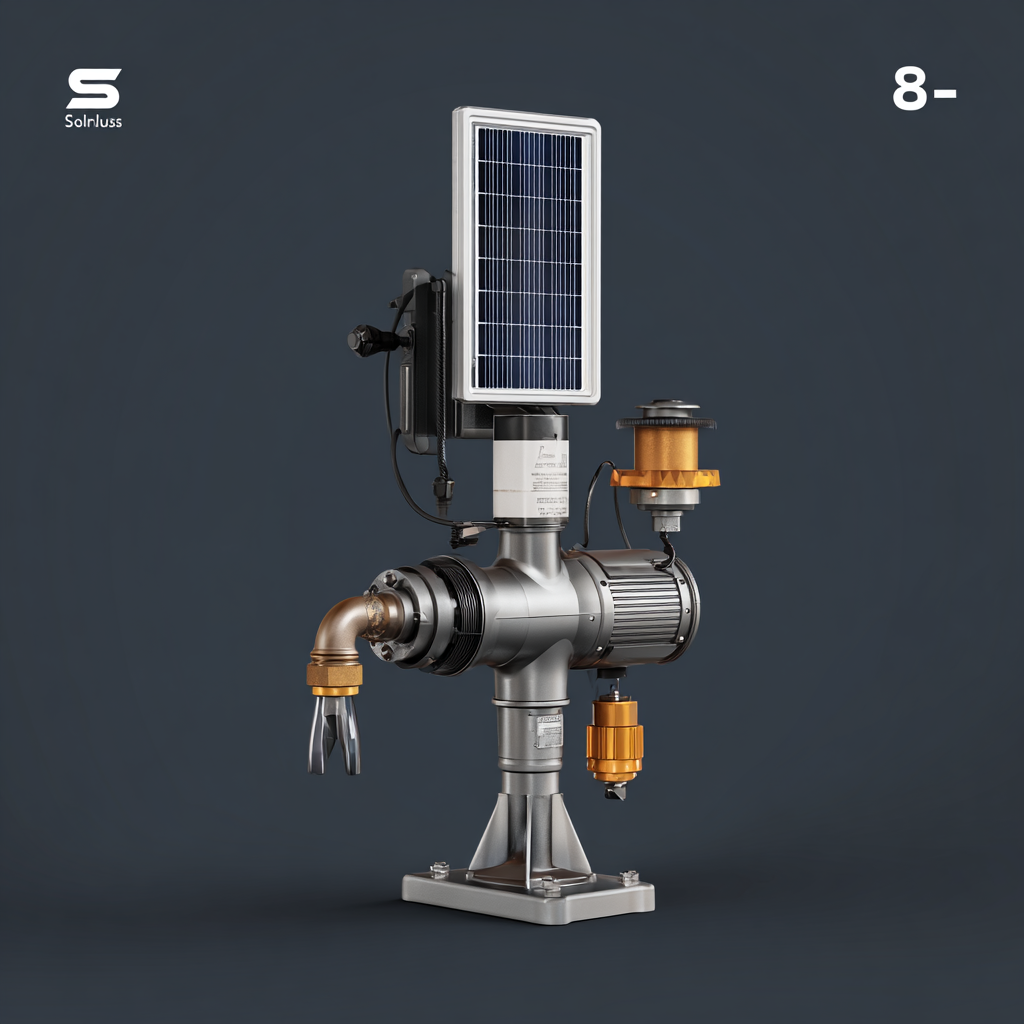7 Essential Tips to Choose the Best Solar Pumps for Your Needs
As the demand for sustainable energy solutions grows, solar pumps have emerged as a vital tool for individuals and businesses looking to harness the power of the sun for their water needs. Whether you're seeking to irrigate your garden, supply water for livestock, or provide a consistent flow of water for your residence, selecting the right solar pump is crucial for maximizing efficiency and performance. However, with a plethora of options available on the market, it can be overwhelming to identify which solar pump truly meets your specific requirements. This blog aims to provide you with seven essential tips to streamline your decision-making process, ensuring that you choose the best solar pump tailored to your unique needs. By understanding the key factors to consider, you can make an informed investment that not only benefits your wallet but also contributes to a greener planet.

Understanding the Different Types of Solar Pumps Available
When it comes to selecting the best solar pump for your needs, it's crucial to understand the different types available. Solar pumps generally fall into two main categories: submersible pumps and surface pumps. Submersible pumps are designed to be submerged in water, making them ideal for deep wells or sources with considerable water depth. They are efficient and can handle significant water volumes. On the other hand, surface pumps are placed above ground and draw water from shallow sources, making them suitable for tasks like irrigation and fountain installations.
One essential tip is to evaluate your specific water needs. Consider the volume and flow rate necessary for your application. For instance, if you're looking to irrigate a large garden, you may need a pump with a higher flow rate. Another important factor is the pump's power source; ensure the solar array is sufficient to operate the pump effectively throughout the day. Also, pay attention to the brand and warranty provided, as high-quality products from reputable manufacturers often guarantee better performance and longevity.
In addition, consider the solar pump's efficiencies, such as solar panel size and compatibility. A larger, more efficient solar panel will enhance pump operation, especially in low sunlight conditions. Always factor in your budget and long-term cost savings, as investing in higher quality may lead to better performance and lower maintenance costs.
7 Essential Tips to Choose the Best Solar Pumps for Your Needs - Understanding the Different Types of Solar Pumps Available
| Pump Type | Best Use | Power Rating (W) | Flow Rate (L/h) | Head Height (m) | Approx. Cost ($) |
|---|---|---|---|---|---|
| Submersible Pump | Deep Wells | 100-150 | 1500 | 30 | 400-600 |
| Surface Pump | Shallow Wells | 75-200 | 1200 | 10 | 300-500 |
| Drip Irrigation Pump | Agricultural Use | 50-100 | 800 | 5 | 250-350 |
| Pool Pump | Swimming Pools | 150-250 | 2000 | 7 | 500-800 |
| Solar Fountain Pump | Garden Fountains | 10-50 | 600 | 2 | 100-200 |
Key Factors to Consider When Choosing Solar Pumps for Your Needs
When selecting the best solar pumps to meet your specific requirements, several key factors come into play. Firstly, it's essential to assess the pump's purpose—whether it's for irrigation, fountain, or livestock watering. Understanding the flow rate required for your application will guide you in choosing a pump that can efficiently handle your needs.
Another critical aspect to consider is the solar panel's capacity and type. Ensuring that the panels generate enough power to operate the pump effectively, even during cloudy days, is vital. Look for pumps that come with high-efficiency solar panels, as they can significantly enhance performance.
Lastly, take a close look at the durability and warranty of the solar pump. Select models made from corrosion-resistant materials, especially if they will be exposed to harsh environmental conditions. A solid warranty can also provide peace of mind, assuring you of the unit’s longevity and reliability. By keeping these factors in mind, you can make a more informed decision that best suits your needs.
Evaluating Performance and Efficiency Ratings of Solar Pumps
When selecting a solar pump, evaluating its performance and efficiency ratings is crucial to ensuring that it meets your specific needs. Performance ratings typically indicate how well the pump can move water, which is influenced by factors such as flow rate, head height, and operational reliability under varying conditions. Look for pumps that provide clear specifications regarding their gallons per minute (GPM) output and maximum lift height, as these will be key indicators of their suitability for your application, whether it’s for irrigation, livestock watering, or a pond system.
Efficiency ratings, on the other hand, reflect how effectively a solar pump converts solar energy into mechanical work. Solar pumps are often rated by their energy consumption versus water output, measured in terms of watts per gallon. When comparing different models, pay attention to this ratio to identify options that maximize performance while minimizing energy waste. Additionally, consider the type of solar panels used, as high-efficiency panels can significantly boost the overall system's effectiveness. Opt for models that combine high performance with strong efficiency ratings to ensure a sustainable and reliable water management solution.
Performance and Efficiency Ratings of Solar Pumps
Assessing Costs and Long-Term Savings of Solar Pump Systems
 When considering solar pumps for your needs, it’s crucial to evaluate not only the initial costs but also the long-term savings they can offer. Solar pumps can significantly reduce your electricity bills, especially for agricultural or residential water needs. Start by calculating your expected water usage and the number of solar panels required to meet that demand. This will provide a clearer understanding of your upfront investment versus potential savings on energy costs over time.
When considering solar pumps for your needs, it’s crucial to evaluate not only the initial costs but also the long-term savings they can offer. Solar pumps can significantly reduce your electricity bills, especially for agricultural or residential water needs. Start by calculating your expected water usage and the number of solar panels required to meet that demand. This will provide a clearer understanding of your upfront investment versus potential savings on energy costs over time.
Another essential tip is to consider the pump's efficiency and maintenance requirements. High-efficiency solar pumps may have a higher upfront cost, but they often yield better long-term savings with less energy consumption. Additionally, investing in a quality pump that requires minimal maintenance will save you both time and money in the future. Regularly evaluating system performance can also highlight any necessary adjustments, ensuring that your solar pump operates efficiently and continues to provide value for years to come.
Exploring Installation and Maintenance Requirements for Solar Pumps
When considering the installation of solar pumps, understanding the specific requirements is crucial for optimal performance. According to a report by the International Renewable Energy Agency (IRENA), solar pumps can reduce operating costs by 50% compared to traditional pumps, making them an attractive option for irrigation and water supply. Installation typically requires a suitable site with adequate sunlight, where panels should be free from shading. It's advisable to select a location that maximizes solar exposure, ensuring that the system operates efficiently throughout the day.

Maintenance is equally important for the longevity and efficiency of solar pumps. A study published by the Solar Energy Industries Association (SEIA) highlights that regular maintenance can extend the lifespan of solar pumps by up to 25%. Key maintenance tasks include inspecting solar panels for dirt and debris, checking electrical connections, and monitoring water output to ensure the system is functioning as expected. Proper maintenance not only enhances performance but also safeguards your investment in renewable energy technology. By addressing installation and maintenance needs, users can fully leverage the benefits of solar pumping systems.
Contact Details
Address:
Solar Pump Solutions,
Borrisokane, Co. Tipperary, Ireland.
